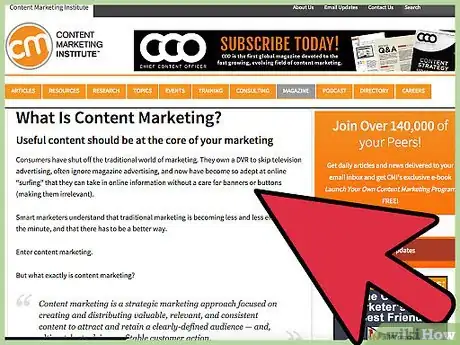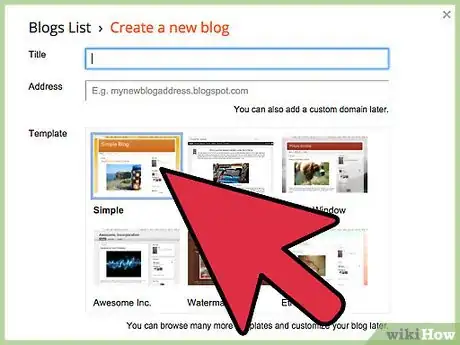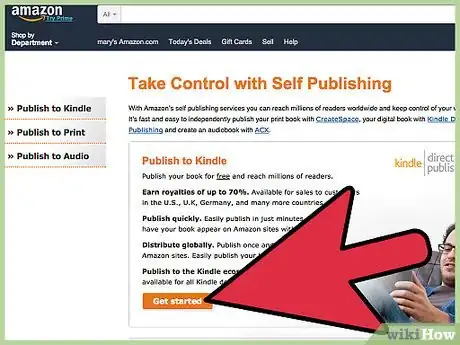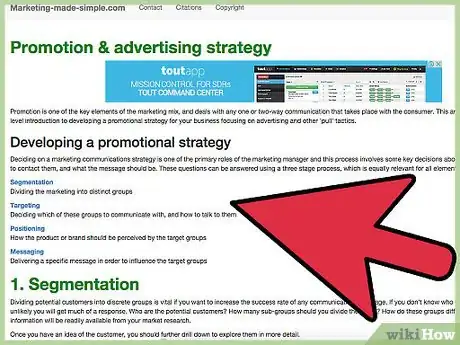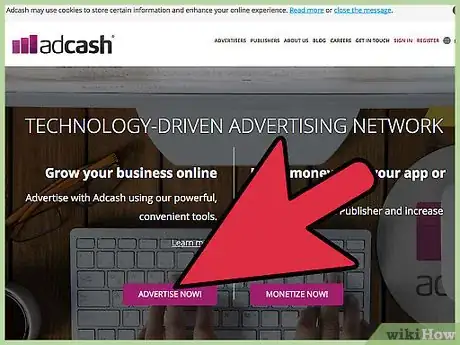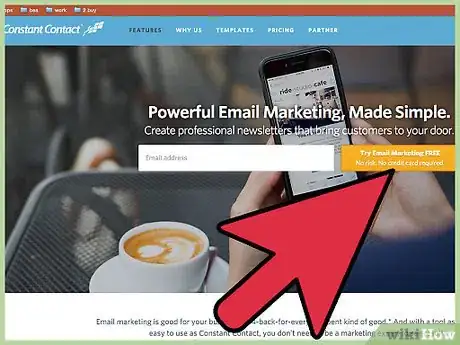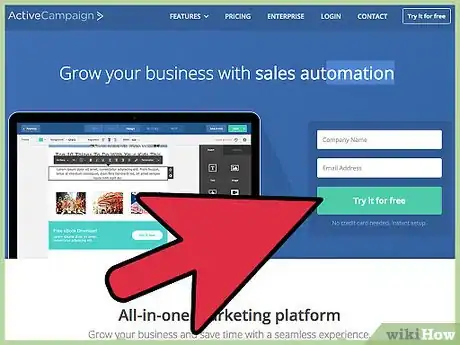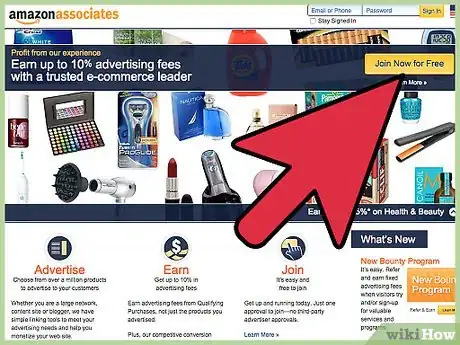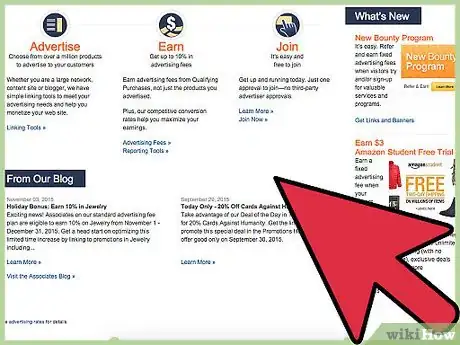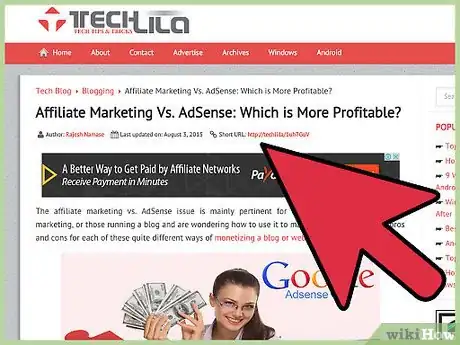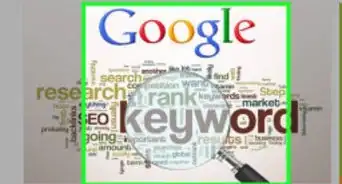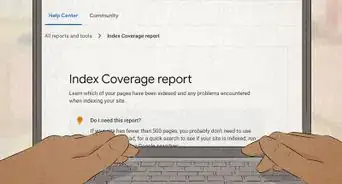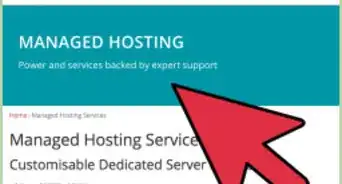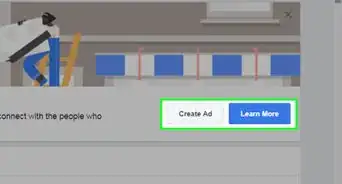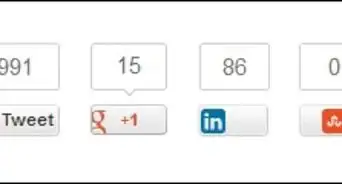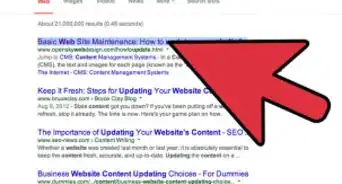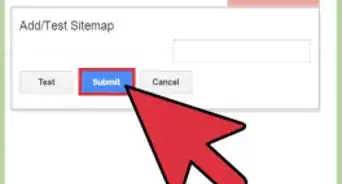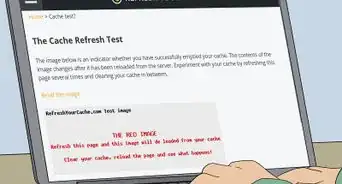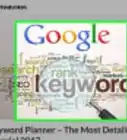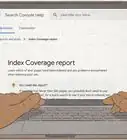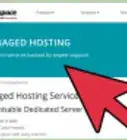This article was co-authored by Janet Peischel. Janet Peischel is a Writer and Digital Media Expert and the Owner of Top of Mind Marketing. With more than 15 years of consulting experience, she develops content strategies and builds online brands for her clients. Prior to consulting, Janet spent over 15 years in the marketing industry, in positions such as the Vice President of Marketing Communications for the Bank of America. Janet holds a BA and MA from the University of Washington.
There are 22 references cited in this article, which can be found at the bottom of the page.
wikiHow marks an article as reader-approved once it receives enough positive feedback. In this case, 100% of readers who voted found the article helpful, earning it our reader-approved status.
This article has been viewed 184,002 times.
Online marketing means advertising and marketing using the internet to drive sales of a product or service.[1] It can increase direct sales via electronic commerce, or it can generate sales leads from websites or emails. You can choose from a variety of specialized areas of internet marketing, including content marketing, affiliate marketing, email marketing and using social media.
Steps
Selecting Your Online Strategy
-
1Learn the definition of content marketing. Content marketing is a strategy for selling your goods or services. It involves setting yourself up as an expert in your field by creating and sharing content that is closely related to what you are selling. The content can include blog posts, videos, online courses or e-books. The goal is to attract and retain a clearly-defined audience who will purchase your goods or services.[2]
-
2Write a blog. If you have a business, consider starting a blog as part of your marketing plan. You can write how-to articles, product reviews, answers to questions and posts about upcoming events. Blogs give you more flexibility than other forms of social media like Facebook or Twitter because you own the content and aren't bound by a third party's rules or restrictions. Also, if your posts include keywords or phrases and link to internal and external content, you can improve the search optimization of your website.[3] Blogs drive sales because you can include product information and links to product pages. [4]
- Don't make the same mistake most businesses make, though, by making their blog posts all about them. Create helpful content for your target audience that gives them a reason for them to visit your site time and time again.
Advertisement -
3Create videos. According to Cisco, video accounted for 64 percent of consumer internet traffic in 2014, and it is expected to grow to 80 percent by 2019.[5] Video is so popular because it's engaging and allows people to get information and entertainment that's easy to digest. With so much information available at their fingertips, most people want to get their content quickly and move on. Produce creative videos that educate your customers about your products. Keep the videos relevant to your audience. Also, promote your videos across several social media channels.[6]
-
4Write e-books. Price Waterhouse Cooper predicts that revenue from e-book sales in the United States will grow from $2.31 billion in 2011 to $8.69 billion in 2018.[7] That's an increase of 276 percent. Since the popularity of e-books is increasing so significantly, consider using this type of media to connect with your customers. Content marketers create self-published titles on platforms like Amazon Kindle Direct Publishing and make them available for free. E-books can help you generate sales leads, educate customers about you and your products, build your brand and offer valuable information to your target audience.
-
5Produce infographics. Infographics are visual displays of information. They display your content using visual design elements. They can illustrate a point from an article, but they also usually convey a self-contained message. Infographics are effective because they can quickly communicate complex information in a visually-pleasing, easily-understood way.[8] Use infographics to present survey data, explain how your product or service works or to compare products or services.[9]
-
6
-
7Host a webinar. A webinar is a workshop or seminar that is presented over the web.[13] Sites like GoToWebinar allow you to host and record webinars. Webinars are practical because you can connect with any number of people from anywhere in the world.[14] Also, like videos and infographics, webinars are visual, which makes them effective at engaging and capturing your audience.
Building an Online Presence
-
1Understand the basics of building an online presence. If you own a business, you need a website. It doesn't need to be fancy, but it does need to present essential information to potential customers.[15] Things like your business' contact information, product descriptions, an online store, etc. A great way to help your website and business get more attention and traffic is through the help of a press release company. They will help your brand get on hundreds of news sites so that people notice you.
- Use search engine optimization (SEO) to ensure your website isn't buried on the last page of a search engine. To do this, you'll need to provide interesting, unique content on your website, use keywords, and get other websites to link back to yours.[16]
-
2Learn the definition of paid channel advertising. This is also sometimes referred to as Search Engine Marketing (SEM) or pay-per-click (PPC) marketing. All of these terms can be used interchangeably, and they refer to purchasing or renting traffic through online advertisements. Although it can be expensive, this strategy is effective because it is measurable and can be used to target specific niches in your target market.[17] But you have to be savvy and develop a successful strategy.[18]
- LinkedIn, Google, Facebook and Twitter all offer paid channel advertising.
-
3Understand the different sales models. The most common forms of paid channel advertising are cost-per-mille (CPM) and cost-per-click (CPC). CPM ads are the banners you see across the tops of webpages. You are billed a flat rate based on the number of times the ad is displayed. CPC ads are the paid advertising results you see on a Google search results page or in the side margin on a Facebook page. You pay for every click on your ad.[19]
- CPM is a cost per 1000 views and that it means that the ad is exposed, but not necessarily read or noticed. CPC is much more expensive since the reader has taken the time to "click through" to the website.
-
4Develop an advertising strategy. Use strategies that let you get the most from your ads. You want to time them properly so they reach your target audience at the right time. Also, you must use strategies that target the location, behavior or browsing habits of your target audience.[20]
- Day targeting allows you to manage how often and when your ads are displayed throughout the day.
- Re-targeting is cookie-based technology. When new visitors come to your site, a cookie is dropped on them. As they browse the web, the cookie displays your ad.[21] Keep in mind unsolicited cookies can have negative repercussions for the vendor.
- Geotargeting markets to customers in a specific geographic location.
- Internet-based targeting finds your customers based on their browsing activity.
- Behavioral targeting finds customers based on their purchasing history.
-
5Choose an ad network. Use information about your target audience to evaluate the different networks and choose the right one for your ads. What works for another business might not work for you. Think about how you want to target your audience and the visual appeal of the ads.[22]
- Decide if you want to target a business-to-business (B2B) or consumer audience. Also, choose to target your customers based on either demographics or their interests.
- Consider the user experience of your ad. Depending on the network you choose, customers can see you ad based on keywords they search, products for which they shop or by their interests or job title.
- Choose an ad format that is visually appealing, aligns with your brand and communicates about your business in a clear way.
Connecting to Customers with Email Marketing
-
1Learn the definition of email marketing. Email marketing is sending a message about your business to a group of people via email. It gives you a way to promote your business and stay connected with your customers. You can send advertisements, requests for business or solicitations for sales or donations. It is an inexpensive and efficient way to reach a large audience. You can also segment your e-mail list to send different kinds of emails to different customers.
-
2Use automation. Use automation technology to send thousands of emails to customers on your marketing list. Software can segment your list and send targeted, timed emails to your customers. It makes your customers feel like you are reaching out to them personally. Email automation software companies include MailChimp, InfusionSoft, Marketo, HubSpot and Eloqua.[23]
-
3Comply with laws regulating SPAM. Familiarize yourself with the Federal Trade Commission's (FTC's) CAN-SPAM Act. This act specifies requirements for commercial emails, gives customers the option to opt out of receiving emails from you and imposes tough penalties for violations. It applies to all commercial email, including bulk email, individual commercial messages, business-to-business (B2B) commercial messages and emails sent to consumers.[24]
- The person or business originating the message must be clearly identifiable.
- The subject line must not be deceptive.
- You must disclose that your message is an ad.
- Your message must include a valid physical address that tells customers where you are located.
- You must offer an opt-out mechanism that works within 10 business days.
- Even if you hire another company to manage your email marketing, you are responsible for complying with the law.
-
4Measure engagement and conversions. Calculate the number of times your emails are opened by customers. Also, measure how many visits to your site are generated by each email campaign. Evaluate how often an opened email converts into a sale. Determine the total revenue earned by each email campaign. Use this information to design future email campaigns.[25]
Driving Sales with Affiliate Marketing
-
1Learn the definition of affiliate marketing. With affiliate marketing, you agree to promote related products on your blog or website with affiliate link buttons. When visitors to your blog or website click on that affiliate link button, they are redirected to that merchant's website. If they make a purchase, you receive a commission. The commission on one sale can be anywhere from $1 to $10,000. The amount you can make depends on what kind of product you promote.[26]
-
2Understand the basics of how affiliate marketing works. Many online retailers who sell products or services offer affiliate programs. If you decide to sign up for a company's affiliate program, you get a tracking link to put on your blog. When visitors click on that link, the link stores a cookie in their browser that remains for a set period of time, such as 60 days. If the visitor purchases a product from that merchant site within the time period, you earn a sales commission.[27]
-
3Understand why affiliate marketing is advantageous. Affiliate marketing is inexpensive. Not only is it free to join an affiliate program, but you also don't have to deal with storing or shipping products or with providing customer support. Also, it is a source of passive income. You can be earning money even when you're not working at your computer. Finally, it allows you to work from home.[30]
-
4Compare affiliate marketing with other types of blog monetization. Other methods of monetizing your blog include selling ad space to sponsors or signing up with an advertising placement service like AdSense. With these programs, you get paid anytime a customer clicks on an ad that is displayed on your webpage.[31]
- Many people who make a lot of money through ads have hundreds or even thousands of websites. They write search engine optimization (SEO) rich content that directs traffic to their sites.
- You get paid pennies per click. You need to attract thousands of visitors to your site per day to be able to earn more than a few dollars per day. If you are attracting that many customers, you can make more money through affiliate marketing.[32]
-
5Choose a product that is relevant to your audience. Think about the traffic that will be visiting your blog. If you are writing a blog about sewing, it might not make sense to have affiliate links to weight lifting equipment. Chances are your readers wouldn't be interested in that product. This means they would be less likely to click on the affiliate link, let alone purchase something through it.[33]
- Ask yourself if you would use the product and would the majority of your readers benefit from the product. If so, then it might be a good product for an affiliate link.
-
6Promote physical products. Physical products are goods that customers can buy. Typical physical product commissions range from 4 percent to 10 percent. Choose an affiliate program that drops cookies that don't expire for 60 to 90 days. This extends the time period during which you might earn a commission.[34]
- To find an affiliate program for a product you want to promote, do an internet search for “product name affiliate program.” For example, search for “potty training affiliate programs.”
- Or, if you are looking for products within a certain niche, you can search for “your niche affiliate program.” For example, search for “parenting affiliate programs.”
-
7Promote information products. An information product is created by another blogger or author to teach something. For example, it might be a course or an e-book. To find these affiliate programs, you generally need to contact the author or blogger directly. Typical commissions on information products range from 30 percent to 50 percent.[35]
- The commissions are so much higher because the seller typically doesn't need to pay production and shipping costs.
-
8Promote services. Think of the services you use and that your readers are likely to use. For example, a parenting blogger could promote child care or tutoring services. With services, you are likely to earn repeat commissions as visitors to your blog may purchase from the service on a recurring basis. Typical commissions for service affiliate programs range from 15 percent to 30 percent. Some service affiliate programs may pay even higher commissions, depending on what the service is.[36]
References
- ↑ http://www.webopedia.com/TERM/I/internet_marketing.html
- ↑ http://contentmarketinginstitute.com/what-is-content-marketing/
- ↑ Janet Peischel. Digital Media Expert. Expert Interview. 30 March 2021.
- ↑ https://www.socialmediaexaminer.com/7-tips-for-making-your-blog-a-content-marketing-magnet/
- ↑ http://www.cisco.com/c/en/us/solutions/collateral/service-provider/ip-ngn-ip-next-generation-network/white_paper_c11-481360.html
- ↑ http://www.theguardian.com/small-business-network/2014/jan/14/video-content-marketing-media-online
- ↑ http://www.statista.com/statistics/190800/ebook-sales-revenue-forecast-for-the-us-market/
- ↑ http://www.instantshift.com/2011/03/25/what-are-infographics-and-why-are-they-important/
- ↑ http://thenextweb.com/dd/2013/10/16/10-ways-use-infographics/
- ↑ https://www.quicksprout.com/the-beginners-guide-to-online-marketing-chapter-6/
- ↑ http://www.copyblogger.com/profit-from-your-expertise/
- ↑ http://www.copyblogger.com/profit-from-your-expertise/
- ↑ http://www.webopedia.com/TERM/W/Webinar.html
- ↑ https://www.quicksprout.com/the-beginners-guide-to-online-marketing-chapter-6/
- ↑ http://www.ducttapemarketing.com/blog/online-presence/
- ↑ Janet Peischel. Digital Media Expert. Expert Interview. 30 March 2021.
- ↑ Janet Peischel. Digital Media Expert. Expert Interview. 30 March 2021.
- ↑ http://www.getspokal.com/a-beginners-guide-to-paid-online-advertising-content-marketing-series-part-7-of-10/
- ↑ https://www.quicksprout.com/the-beginners-guide-to-online-marketing-chapter-7/
- ↑ https://www.quicksprout.com/the-beginners-guide-to-online-marketing-chapter-7/
- ↑ http://www.getspokal.com/a-beginners-guide-to-paid-online-advertising-content-marketing-series-part-7-of-10/
- ↑ http://www.getspokal.com/a-beginners-guide-to-paid-online-advertising-content-marketing-series-part-7-of-10/
- ↑ https://www.quicksprout.com/the-beginners-guide-to-online-marketing-chapter-8/
- ↑ https://www.ftc.gov/tips-advice/business-center/guidance/can-spam-act-compliance-guide-business
- ↑ https://www.quicksprout.com/the-beginners-guide-to-online-marketing-chapter-8/
- ↑ http://www.shoutmeloud.com/what-is-affiliate-marketing.html
- ↑ http://www.shoutmeloud.com/what-is-affiliate-marketing.html
- ↑ https://www.tipsandtricks-hq.com/can-you-make-money-from-affiliate-marketing-if-so-how-2473
- ↑ http://docs.affiliatewp.com/article/52-common-questions-on-affiliate-tracking
- ↑ https://www.tipsandtricks-hq.com/can-you-make-money-from-affiliate-marketing-if-so-how-2473
- ↑ https://www.nutsandboltsmedia.com/how-does-adsense-work/
- ↑ http://www.seanogle.com/entrepreneurship/how-to-start-affiliate-marketing
- ↑ http://www.seanogle.com/entrepreneurship/how-to-start-affiliate-marketing
- ↑ http://www.seanogle.com/entrepreneurship/how-to-start-affiliate-marketing
- ↑ http://www.seanogle.com/entrepreneurship/how-to-start-affiliate-marketing
- ↑ http://www.seanogle.com/entrepreneurship/how-to-start-affiliate-marketing
About This Article
One way to make money online through internet marketing is to write a blog or make a video to promote your business. You can also try writing how-to articles or product reviews that link back to your website to increase your viewership. Additionally, you can try search engine optimization (SEO) to ensure your website is listed higher on search engines. To achieve this, make sure to include interesting content and important keywords on your website, and get other websites to link back to your website. To learn how to use email marketing to promote your business, read more from our Financial Advisor co-author.
